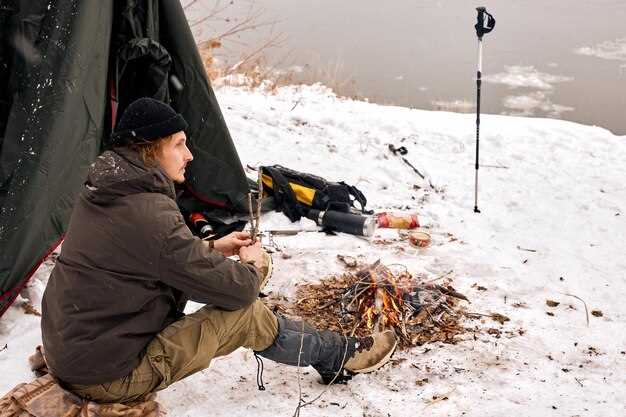
When pursuing the elusive whitetail deer, understanding their preferred habitat is essential for successful bowhunting. The terrain where these deer thrive greatly influences their behavior and movement patterns. Whitetails are adaptive creatures, often found in a variety of landscapes, but certain terrains provide them with optimal conditions for feeding, breeding, and shelter.
The ideal habitat for whitetail deer encompasses a blend of diverse vegetation, water sources, and protective cover. Areas featuring a mix of hardwoods and softwoods are particularly appealing, as they provide ample food sources like acorns and other natural forage. Additionally, proximity to water sources plays a crucial role, as whitetails often venture out of their cover to hydrate, especially during dry spells.
Beyond vegetation and water, the topography of the land can significantly impact whitetail movement. Gentle slopes, ridges, and valleys often serve as natural pathways, allowing deer to traverse between feeding and bedding areas with minimal exposure to predators. By focusing on these ideal terrain types, hunters can enhance their chances of a successful bowhunting experience while respecting the delicate balance of nature that sustains whitetail populations.
Finding the Best Forest Edges and Clearings
When it comes to bowhunting whitetail deer, identifying the right terrain is crucial for success. One of the most effective strategies involves locating the best forest edges and clearings, which serve as vital habitats for deer.
Forest edges and clearings offer a unique intersection of different habitats, providing whitetail deer with food, cover, and travel routes. Here’s how to find the most productive spots:
- Look for Transition Zones: These areas where two different habitats meet–like forest and open field–are prime spots. Deer feel secure in these spaces, allowing them to forage without being exposed.
- Identify Food Sources: Clearings often provide access to forage such as clover, grasses, and fruit-bearing plants. Scout these areas for signs of deer activity, such as tracks and droppings.
- Assess Cover: Tall grasses, shrubs, and dense trees along the edges offer necessary cover for deer. Look for spots where the cover is thick enough to provide safety while still being close to feeding areas.
- Pay Attention to Wind Patterns: Understanding how wind interacts with the terrain can enhance your success. Deer often use forest edges to stay downwind of predators, making these areas highly trafficked.
- Check for Trails: Look for well-worn trails leading to and from clearings. These paths indicate regular movement and can help you predict where deer will be during feeding times.
Utilizing a combination of these strategies will help pinpoint the best forest edges and clearings for bowhunting whitetail deer. Matching your hunting approach with the natural habitat will increase your chances of a successful harvest.
Understanding Water Sources and Their Impact on Deer Movement

Water sources play a crucial role in shaping the habitat of whitetail deer and significantly influence their movement patterns. Accessible water is essential for deer, particularly in dry or hot conditions, as they require hydration to maintain their health and vitality. This makes areas near rivers, streams, ponds, and lakes prime locations for deer activity.
The proximity of water sources affects the daily routines of whitetail deer. They often travel in a predictable manner, heading to watering spots during early mornings or late afternoons, which can be essential times for hunters to plan their outings. Furthermore, these water sources can serve as natural funnels, guiding deer movement through specific areas, making them strategic locations for setting up hunting stands.
Seasonal changes also impact how deer utilize water sources. During summer, deer are more likely to frequent these areas due to increased physiological needs. Conversely, in wetter seasons, their reliance on water may decrease as food sources become more abundant. This variability emphasizes the importance of understanding local conditions, as hunters must adapt their strategies based on seasonal patterns of whitetail movement.
Additionally, water sources can influence the overall quality of the habitat surrounding them. Areas with abundant water often support lush vegetation, which attracts deer for foraging. By identifying these critical zones, hunters can enhance their chances of successful encounters with whitetail deer. Understanding how water shapes deer behavior not only aids in locating their preferred habitats but also contributes to more effective hunting techniques.
Evaluating Terrain Features for Optimal Stand Placement

When preparing for a successful whitetail deer hunt, understanding the terrain is crucial for optimal stand placement. Various features of the landscape can influence deer movement patterns, feeding behaviors, and overall visibility. Evaluating these terrain elements can significantly enhance your chances of encountering deer.
First, consider the presence of natural funnels, such as narrow valleys, ridges, or natural gaps between obstacles. These funnels tend to concentrate whitetail movement, making them ideal locations for stand placement. Observing how deer travel through these areas can help identify high-traffic zones where stands will be most effective.
Next, evaluate the proximity to food sources. Whitetails are creatures of habit, often returning to established feeding areas. Placing a stand near agricultural fields, mast-producing trees, or select food plots can increase the likelihood of an encounter. Understanding the seasonal availability of these food sources is vital for determining the best times to hunt.
Water sources are another essential feature to consider. Whitetails need water, especially during the warmer months. Placing a stand near ponds, lakes, or streams can be advantageous, as deer will regularly visit these spots to drink. Observing deer trails leading to water can offer insights into their movement patterns.
Additionally, pay attention to bedding areas. Whitetail deer prefer to bed down in areas that provide cover and security. Identifying the terrain that offers dense vegetation or thickets can help in finding nearby stands. Approaching these locations cautiously is vital to avoid spooking deer and altering their natural patterns.
Lastly, consider elevation changes within the terrain. Whitetails often utilize ridges and high ground for visibility while bedding or traveling. Placing stands at higher elevations can allow hunters to spot deer from a distance, improving the chances of a successful shot. Integrating these diverse terrain features into your planning can significantly impact your archery success.


